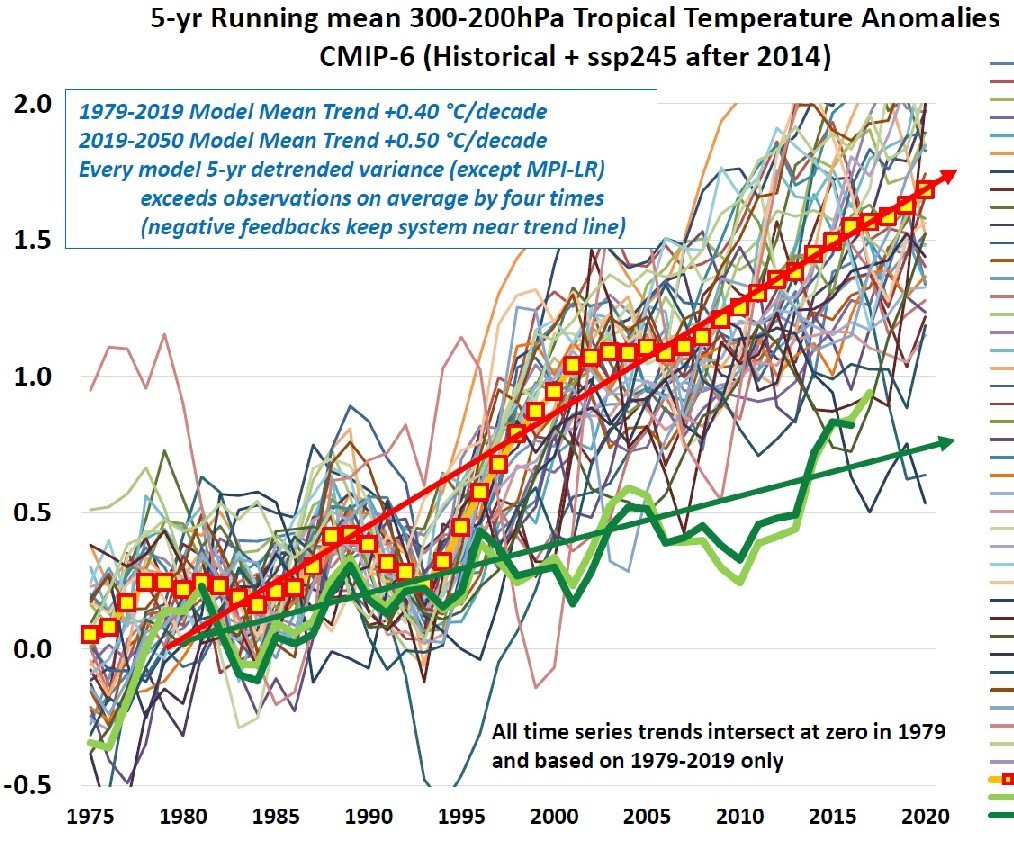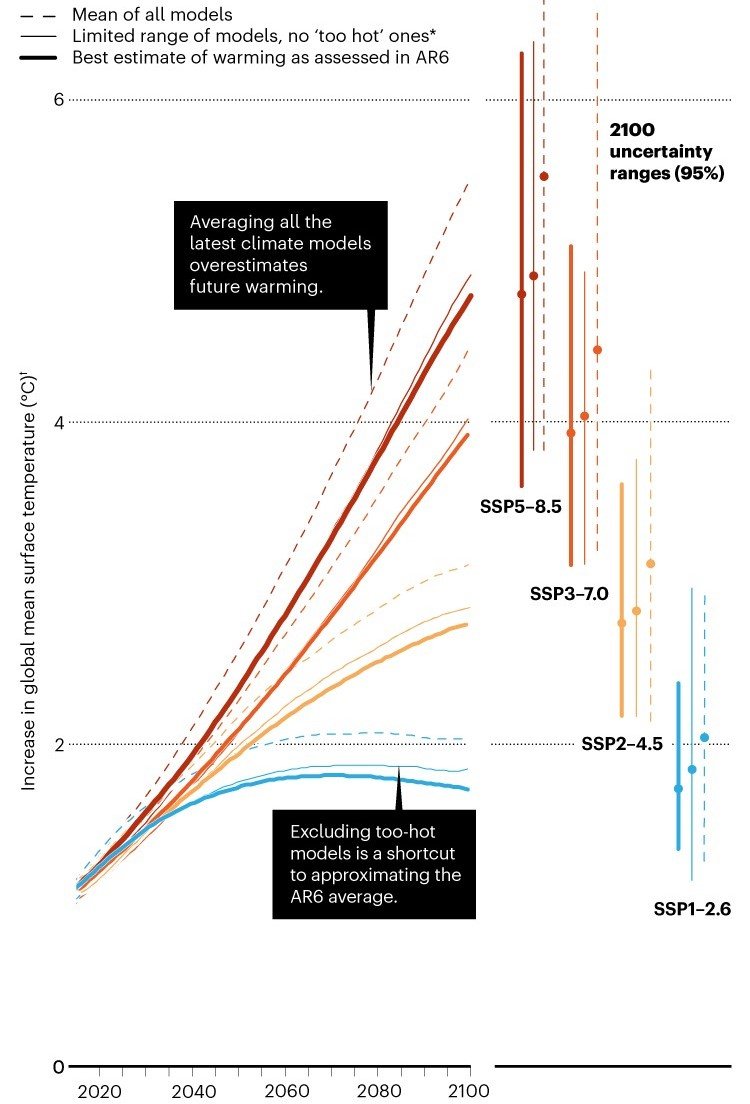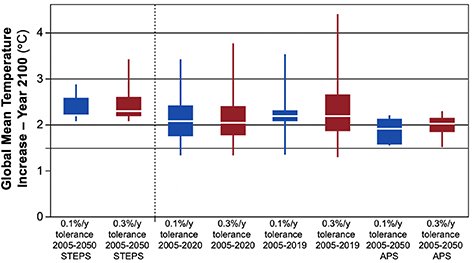Climate Science Establishment Finally Admits Some Models Run Too Hot
/The weaknesses of computer climate models – in particular their exaggeration of global warming’s impact – have long been denied or downplayed by modelers. But in a recent about-face published in the prestigious scientific journal Nature, a group of prominent climate scientists tell us it’s time to “recognize the ‘hot model’ problem.”
The admission that some models predict a future that gets too hot too soon has far-reaching implications, not only for climate science, but also for worldwide political action being considered to curb greenhouse gas emissions. Widespread panic about an unbearably hot future is largely a result of overblown climate model predictions.
I’ve discussed the shortcomings of climate models in previous posts (see here and here). As well as their omission of many types of natural variability and their overestimation of predicted future temperatures, most models can’t even reproduce the past climate accurately – a process known to modelers as hindcasting. You can see this in the following figure, which shows global warming, relative to 1979 in degrees Celsius, hindcasted by 43 different models for the period from 1975 to 2019.
The thin colored lines indicate the modeled variation of temperature with time for the different models, while the thick red and green lines show the mean trend for models and observations, respectively. It's evident that, even in the past, many models run too hot, with only a small number coming close to actual measurements.
Current projections of future warming represent an average of an ensemble of typically 55 different models. Researchers have found the reason some of the 55 models run hot is because of their inaccurate representation of clouds, which distorts the ensemble average upwards. When these too-hot models are excluded from the ensemble, the projected global mean temperature in the year 2100 drops by as much as 0.7 degrees Celsius (1.3 degrees Fahrenheit).
Zeke Hausfather, lead author of the Nature article, remarks that it’s therefore a mistake for scientists to continue to assume that each climate model is independent and equally valid. “We must move away from the naïve idea of model democracy,” he says.
This approach has in fact been adopted in the Sixth Assessment Report (AR6) of the UN’s IPCC (Intergovernmental Panel on Climate Change). To estimate future global temperatures, AR6 authors assigned weights to the different climate models before averaging them, using various statistical weighting methods. More weight was given to the models that agreed most closely with historical temperature observations.
Their results are illustrated in the next figure, showing projected temperature increases to 2100, for four different possible CO2 emissions scenarios ranging from low (SSP1-2.6) to high (SSP5-8.5) emissions. The dashed lines for each scenario are projections that average all models, as done previously; the thin solid lines are projections that average all but the hottest models; and the thick solid lines are projections based on the IPCC statistical adjustment, which are seen to be slightly lower than the average excluding hot models
The figure sheds light on a second reason that climate models overestimate future temperatures, aside from their inadequate simulation of climatic processes, namely an emphasis on unrealistically high emissions scenarios. The mean projected temperature rise by 2100 is seen to range up to 4.8 degrees Celsius (8.6 degrees Fahrenheit) for the highest emissions scenario.
But the somewhat wide range of projected warming has been narrowed in a recent paper by the University of Colorado’s Roger Pielke Jr. and coauthors, who select the scenarios that are most consistent with temperature observations from 2005 to 2020, and that best match emissions projected by the IEA (International Energy Agency).
As shown in the figure below, their selected scenarios project warming by 2100 of between 2 and 3 degrees Celsius (3.6 and 5.4 degrees Fahrenheit), the exact value depending on the particular filter used in the analysis. Boxes denote the 25th to 75th percentile ranges for each filter, while white lines denote the medians.
Overall, the projected median is 2.2 degrees Celsius (4 degrees Fahrenheit), considerably lower than the implausible 4 to 5 degrees Celsius (7.2 to 9 degrees Fahrenheit) of future warming often touted by the media – although it’s slightly above the upper limit of 2 degrees Celsius (3.6 degrees Fahrenheit) targeted by the 2015 Paris Agreement. But, as Pielke has commented, the unrealistic high-emissions scenarios are the basis for dozens of research papers published every week, leading to ever-proliferating “sources of error in projections of future climate change.”
Likewise, Hausfather and his coauthors are concerned that “… much of the scientific literature is at risk of reporting projections that are … overly influenced by the hot models.” In addition to prioritizing models with realistic warming rates, he suggests adopting another IPCC approach to predicting the future climate: one that emphasizes the effects of specific levels of global warming (1.5, 2, 3 and 4 degrees Celsius for example), regardless of when those levels are reached.
Next: No Convincing Evidence That Cleaner Air Causes More Hurricanes







